A clamping ring has several purposes. First is to clamp and create a watertight adherence to the roof membrane. Second is to act as a gravel guard, by which gravel on the roof surface is kept out of the sump and pipe outlet.
An Overflow drain is a standard drain with either an internal or external water dam used to prevent the overloading of roofs where the building code calls for a specific maximum water build-up depth. An external water dam (the most common) is outside the dome, and is used to keep debris away from the dome until overflow action begins. An internal water dam is located inside the dome area.
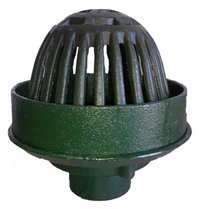
A combo drain is both a standard roof drain and an overflow drain combined onto one sump receiver. Some combo drains come as three pieces (standard drain, overflow drain, and sump receiver); others come as one cast iron unit.
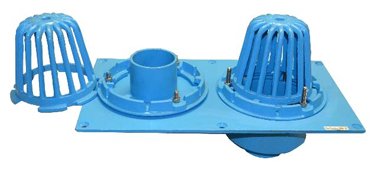
Retrofit Drains are designed to quickly and affordably replace existing drains for re‐roofing applications. These drains are installed by a professional roofer into an existing drain pipe so the existing drain will not be disturbed. Retrofit drains are available in many sizes – from 2” to 10” and available in different materials – Copper, Aluminum or Plastic. Retrofit drains are installed from the roof surface over the existing drain body and ring and are able to be flashed with a watertight connection to the roof system. Clamping Rings are recommended for any single ply, EPDM or TPO Applications.
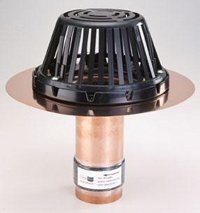
A sump receiver is a square metal plate with recessed center opening to accept the drain body flange. Also referred to as a bearing pan, it is used when exact location of the drain can’t be determined or when instances of opening the roof cannot be precisely cut. It distributes the weight and securely cradles the drain in the roof deck.
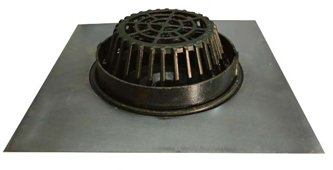
An Under-deck clamp is a cast-iron clamp that sits under the deck, and bolts into the lower body of the drain sump. Under-deck clamps are recommended to provide a secure, long lasting installation of the roof drain on all but poured-in-place installations. Roof drains must be firmly secured to the roof with an under-deck clamp, otherwise, due to snow loads, rain loads and regular expansion and contraction, the drain will work in and out of the roofing, causing roofing membranes to flex and fail. Brittle asphalt will crack and leaks will occur.
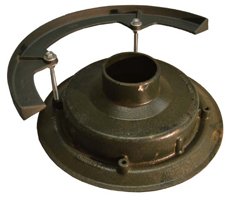
There are several different drain outlet types. The most common is the no-hub outlet. This is connected to the drain leader by a rubber coupling. The other types of drain outlets are threaded and inside caulk. Threaded (or Iron Pipe) connections are an old industry standard. The female (NPT) threaded outlet is often specified on industrial and institutional applications. Inside caulk is often specified when the drain body is positioned on pipe and the bottom of the outlet is sealed with oakum and the connection is then completed.
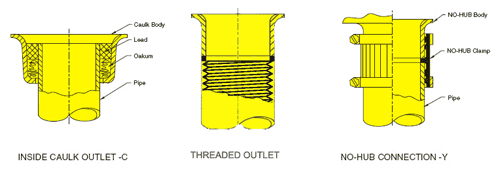
The four things you will need to know are rate of precipitation, total area of roof, size of leader required, and area handled by each drain. When sizing roof drains, the limiting factor for the amount of water each drain will carry away is the size of the leader. Therefore, increasing leader size decreases the number of drains required. For more information, go to our sizing data page “here“.
You can go to our Advanced Drain Finder. Some helpful info you’ll need to find the right rings and domes are manufacturer of the drain (or color – each manufacturer has its own signature color), outer diameter (OD) of the dome, OD of the clamping ring (measured from the gravel guard, not the body), number of bolt holes in the clamping ring, and distance between bolt holes (straight across if 4 holes measured on center of the bolt).
Cast iron is the most popular option when it comes to roof drains. Rugged, reliable and old fashioned, the drain your Daddy’s Daddy used when he was on the roof. Copper is versatile and resistant to the elements. As it ages, it produces a nice patina effect that is desired in scupper and parapet drains. Plastic (ABS) is an economical option and can be easily flashed to many roofing applications, from BUR to Single Ply.